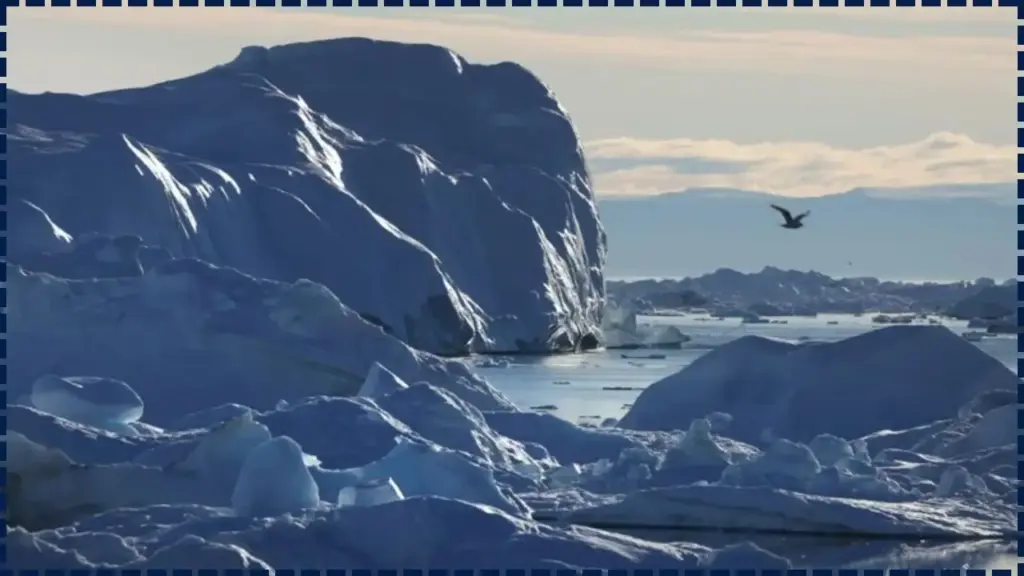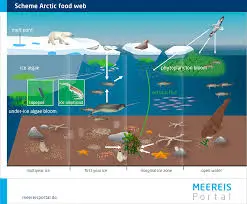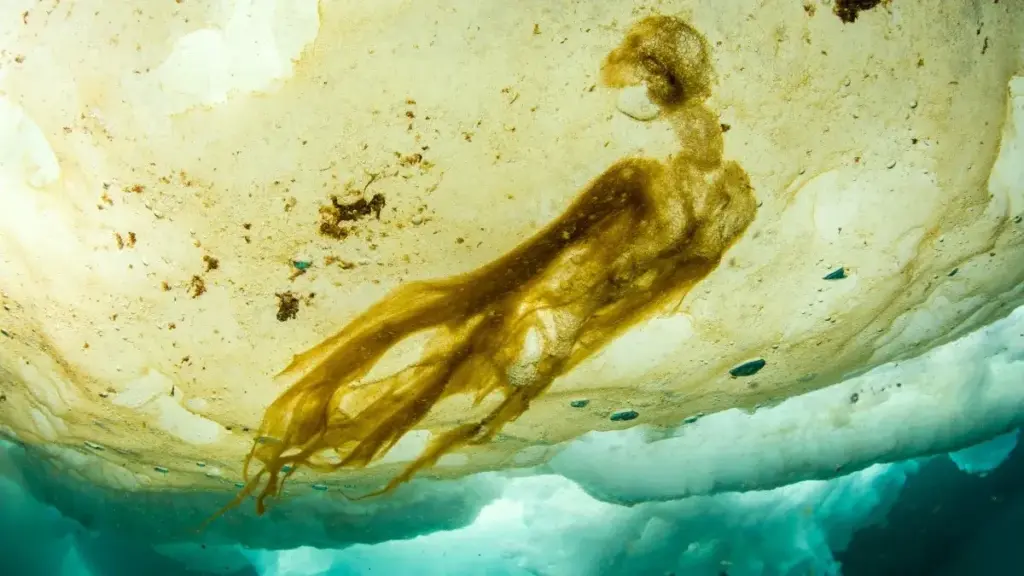An international team led by the University of Copenhagen has found thriving microbial life deep beneath the central Arctic Ocean’s thick, multi-year ice. The research, published in Nature Communications in October 2025, identified non-cyanobacterial diazotrophs—microbes capable of nitrogen fixation—active in near-freezing, pitch-dark waters.

The discovery upends decades of scientific consensus. For years, experts assumed biological activity under the Arctic’s permanent ice was virtually nonexistent due to extreme cold, lack of sunlight, and nutrient scarcity.
“We found microorganisms performing complex chemical processes in conditions previously thought impossible for life,” said Dr. Anne Dittmar, a marine microbiologist at the University of Copenhagen and co-author of the study. “It suggests that our understanding of polar ecosystems is still in its infancy.”
Discovery of ‘Impossible’ Life Beneath Arctic Ice
| Key Fact | Detail/Statistic | Source |
|---|---|---|
| Discovery site | Central Arctic Ocean, north of Greenland | University of Copenhagen (2025) |
| Organisms identified | Non-cyanobacterial diazotrophs | Nature Communications |
| Biological process | Active nitrogen fixation beneath multi-year sea ice | Alfred Wegener Institute |
| Broader significance | Redefines life limits and revises Arctic ecosystem models | European Polar Research Network |
Scientists have discovered “impossible” life beneath Arctic sea ice—microbes thriving where no life was thought to exist. The finding challenges long-held assumptions about extreme environments, reshaping understanding of Earth’s biology, climate systems, and the potential for life beyond our planet.

Redefining the Limits of Life
The microorganisms discovered beneath Arctic ice are capable of nitrogen fixation, the process of converting inert atmospheric nitrogen (N₂) into ammonia (NH₃), a compound that forms the foundation of biological growth. Previously, scientists believed this could only occur in warmer, sunlit regions where cyanobacteria dominate.
“Finding this process under dense, cold ice overturns fundamental assumptions about marine microbiology,” explained Dr. Lars Pedersen, lead author of the paper. “It means ecosystems in the Arctic are more self-sustaining than we realized.”
Nitrogen fixation provides essential nutrients for microscopic algae and bacteria, which form the base of the Arctic food web. If this process is widespread under the ice, it could significantly alter how scientists estimate biological productivity and nutrient flow in the world’s fastest-warming region.
Implications for Climate and Ecosystem Models
According to the National Oceanic and Atmospheric Administration (NOAA), the Arctic is warming nearly four times faster than the rest of the planet. Current climate models assume that biological productivity nearly halts during the region’s long, sunless winters.
However, the discovery suggests the Arctic Ocean continues to host biochemical activity year-round, meaning it may absorb and release carbon in ways not yet accounted for in global models.
“The under-ice microbiome is like a hidden engine in the climate system,” said Dr. Olivia Grant, an ocean chemist at the National Center for Atmospheric Research (NCAR) in Colorado. “Even small biochemical processes, if widespread, can have measurable impacts on carbon flux.”
The researchers emphasize that climate projections may need to be updated to reflect these processes, which could affect global estimates of greenhouse gas exchange between the oceans and the atmosphere.
A New Chapter for Arctic Science
The findings were part of the Polarstern 2025 Expedition, a joint effort involving institutions from Denmark, Germany, the United States, and Canada. Using remotely operated vehicles, scientists collected ice cores and water samples from depths of up to 40 meters.
Laboratory analysis using isotopic tracers and genetic sequencing confirmed active nitrogen fixation. The microbes were metabolically active despite near-freezing water and minimal light.
“The genetic fingerprints were clear,” Pedersen said. “We detected nitrogenase—the enzyme that drives nitrogen fixation—in samples taken from some of the harshest conditions on Earth.”
This discovery builds on earlier hints from the MOSAiC Expedition (2019–2020), which had suggested limited microbial activity under ice. The new study provides direct evidence of large-scale biological function, marking a turning point in Arctic biological research.
Lessons for Astrobiology
The extreme Arctic environment mirrors conditions that may exist elsewhere in the solar system, particularly on Jupiter’s moon Europa and Saturn’s moon Enceladus, both of which harbor sub-ice oceans.
NASA astrobiologist Dr. Mark Reynolds called the discovery “a profound analog for extraterrestrial life.”
“If microbes can survive and thrive under Arctic ice without sunlight, it strengthens the case for life existing beneath the ice crusts of other worlds,” Reynolds said. “The biochemistry we’re seeing here could help guide future missions to Europa or Enceladus.”
NASA and the European Space Agency (ESA) plan to launch missions to those icy moons later this decade. Data from Arctic research are already helping engineers design instruments for detecting biological signatures under ice-covered oceans.

Policy and Global Impact
Environmental policymakers say the finding underscores the urgency of protecting Arctic ecosystems as climate change accelerates. The Intergovernmental Panel on Climate Change (IPCC) warns that shrinking sea ice could disrupt not only wildlife but also microbial systems essential for nutrient balance.
“We are learning that the Arctic is far more alive and interconnected than we realized,” said Dr. Jane Wilkinson, a polar ecologist at the British Antarctic Survey. “If we lose this ice, we might also lose unseen ecosystems that stabilize parts of our climate.”
Several nations have called for increased funding for polar research under the Arctic Council’s Sustainable Development Working Group, emphasizing the global implications of Arctic environmental change.
The Road Ahead
The Copenhagen-led team plans further expeditions in 2026 to measure how widespread these microbial communities are and how their activity changes with seasonal ice melt. The researchers hope to integrate their data into climate models and collaborate with astrophysicists studying icy moons.
“Every discovery like this reminds us how resilient life is,” Dittmar said. “The Arctic continues to surprise us, and each surprise helps us understand our planet—and perhaps others—a little better.”
FAQ
Q: Why was this discovery unexpected?
Scientists believed that freezing, lightless waters under Arctic ice could not sustain nitrogen fixation, a key biological process.
Q: Does this change how we model climate systems?
Yes. Active microbial processes under ice suggest Arctic carbon and nutrient cycles are more complex than current models assume.
Q: Could this discovery help space research?
Absolutely. It offers an Earth-based model for potential life in the sub-ice oceans of Europa and Enceladus.









